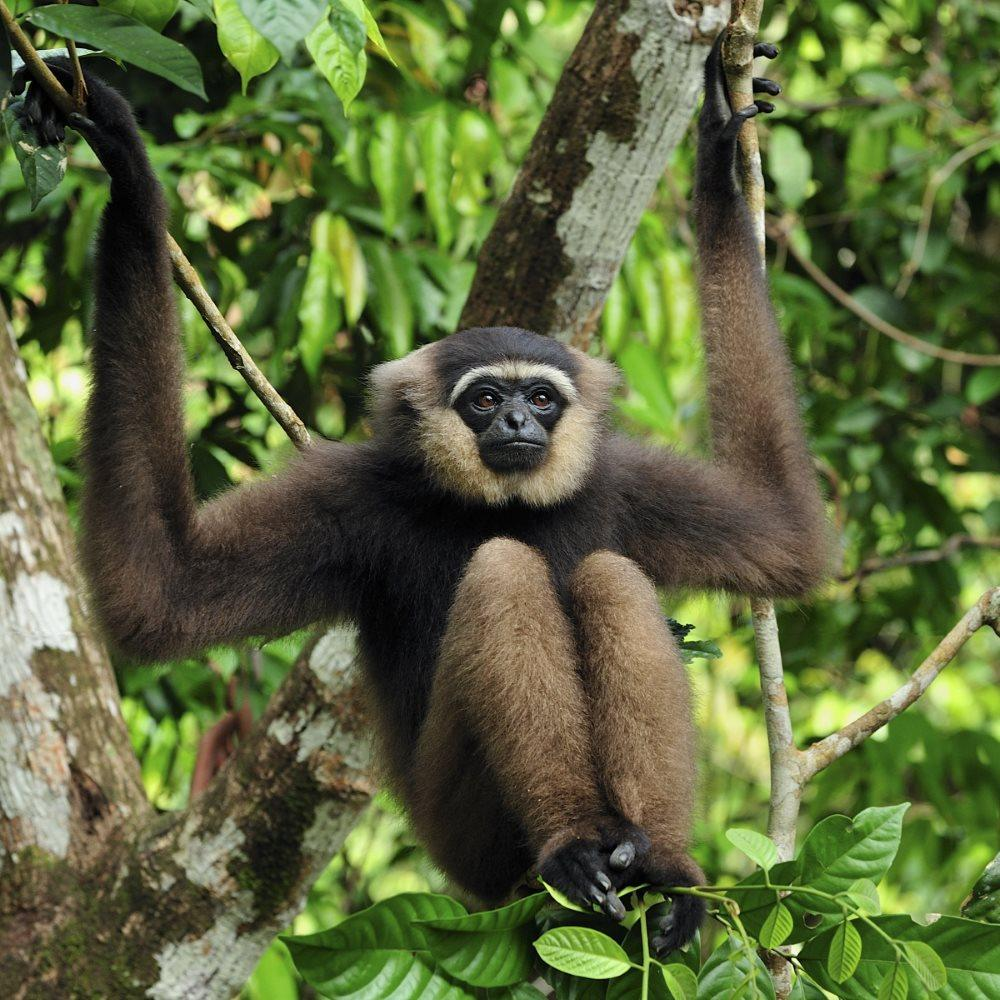India's Only Ape Species: The Hoolock Gibbon | 19 Jul 2023
Why in News?
The conservation status of India's sole ape species, the hoolock gibbon, has become a pressing global concern.
- The Global Gibbon Network (GGN) recently convened its inaugural meeting in Haikou, China's Hainan province, shedding light on the critical situation faced by these primates.
Note: Global Gibbon Network was initiated at the International Gibbon Day 2020 event, representatives from 20 gibbon conservation organizations came together for the first time to discuss gibbon conservation.
What are the Key Facts about Hoolock Gibbon?
- About:
- Gibbons, known as the smallest and fastest of all apes, inhabit tropical and subtropical forests in Southeast Asia.
- They have high intelligence, distinct personalities, and strong family bonds similar to other apes.
- They represent one of the 20 gibbon species found worldwide.
- Gibbons, known as the smallest and fastest of all apes, inhabit tropical and subtropical forests in Southeast Asia.
- Population and Habitat:
- The current population of hoolock gibbons is estimated to be around 12,000 individuals.
- They are found in forested areas of Northeast India, Bangladesh, Myanmar and Southern China.
- Gibbon Species in India:
- Two distinct hoolock gibbon species are found in India's northeastern region: the eastern hoolock gibbon (Hoolock leuconedys) and the western hoolock gibbon (Hoolock hoolock).
- A recent study by the Centre for Cellular and Molecular Biology (CCMB) in Hyderabad analyzed the genetics of these gibbons.
- The study revealed that there is actually only one species of gibbon in India, debunking the previous belief of separate eastern and western species based on coat color.
- The genetic analysis showed that the populations previously thought to be eastern and western hoolock gibbons diverged approximately 1.48 million years ago.
- The study also estimated that gibbons diverged from a common ancestor around 8.38 million years ago.
- Threats:
- All 20 gibbon species, including hoolock gibbons, are at a high risk of extinction due to conservation challenges.
- Gibbon populations and their habitats have significantly declined over the past century, leaving small populations restricted to tropical rainforests.
- In India, the primary threat to hoolock gibbons is the loss of their natural habitat caused by deforestation for infrastructure projects.
- Conservation Status:
- International Union for Conservation of Nature's Red List:
- Western Hoolock Gibbon: Endangered
- Eastern Hoolock Gibbon: Vulnerable.
- Also, both the species are listed on Schedule 1 of the Indian (Wildlife) Protection Act 1972.
- International Union for Conservation of Nature's Red List:
UPSC Civil Services Examination, Previous Year Questions (PYQs)
Q. Consider the following pairs: (2010)
| Protected area | Well-known for | |
| 1. | Bhiterkanika, Orissa | Salt Water Crocodile |
| 2. | Desert National Park, Rajasthan | Great Indian Bustard |
| 3. | Eravikulam, Kerala | Hoolock Gibbon |
Which of the pairs given above is/are correctly matched?
(a) 1 only
(b) 1 and 2 only
(c) 2 only
(d) 1, 2 and 3
Ans: (b)

